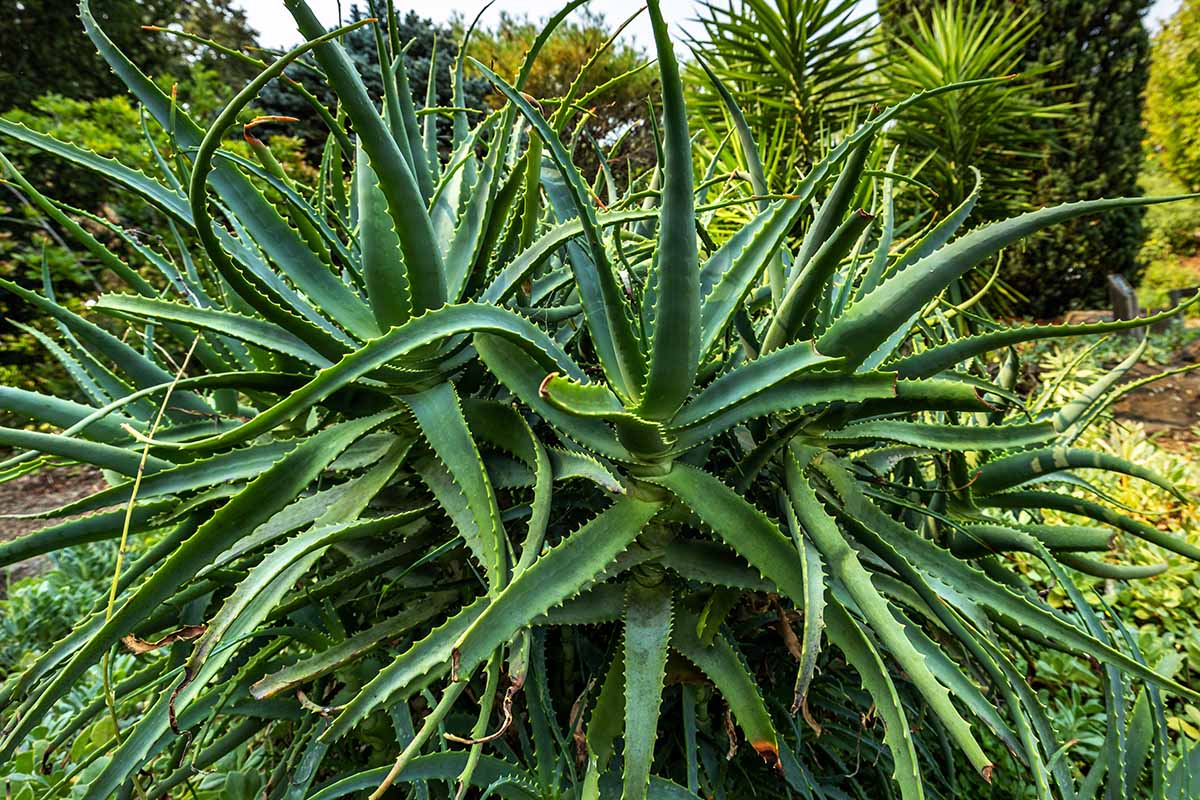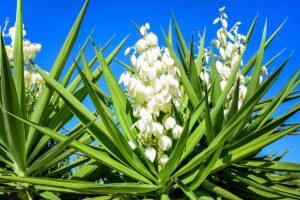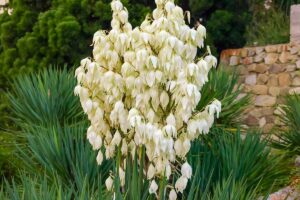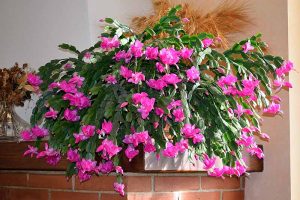How many different types of aloe can you name off the top of your head?
Probably not that many, if your experience with these beloved succulents is comparable to that of most gardeners.

We link to vendors to help you find relevant products. If you buy from one of our links, we may earn a commission.
Aloe barbadensis, also known as aloe vera, is the top choice in home cultivation and the variety that’s most widely known.
But guess what – there are hundreds of species and even more cultivars and hybrids.
We couldn’t possibly cover all 400-plus species here, and honestly, many of them don’t make suitable additions to the average home or landscape.
Instead, we’ll talk about the different groups that most types of aloe can be categorized into, based upon their characteristics, growing habits, and expected size and form at maturity.
You’ll also note some occasional overlap between these.
Let’s get started – here’s what lies ahead:
What Are the Different Types of Aloe?
Basic Aloe Variations
Rather than choose the most popular version of these succulents available in every garden center, shake things up in your indoor container garden, or your outdoor garden if local growing conditions permit.
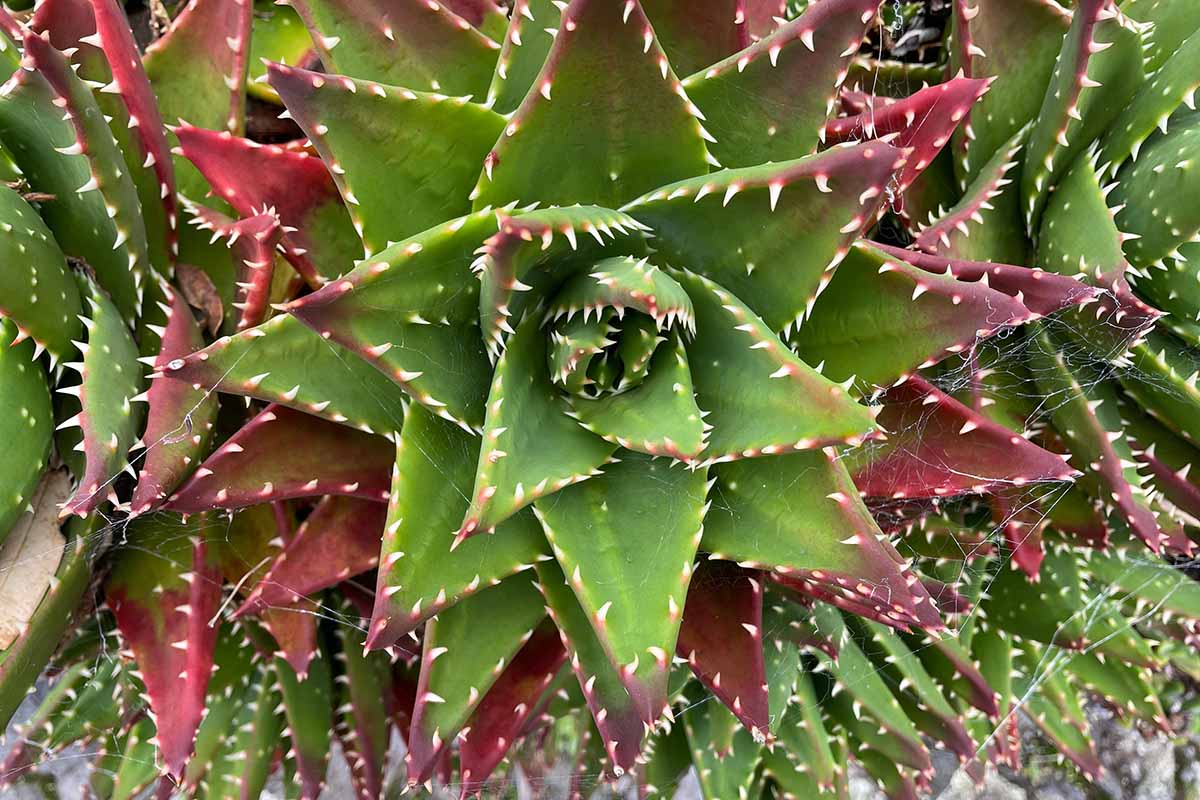
Well-known characteristics of the most popular species have led to a common misconception that all of these succulents are compact, houseplant-worthy specimens, but this is not so.
Some species can grow to be quite large, reaching great heights or sprawling across broad spaces in tree or shrub form.
Since flowering isn’t typical indoors, many gardeners are also unfamiliar with aloe’s ability to produce clusters of brightly colored flowers on conical or cylinder-shaped racemes.
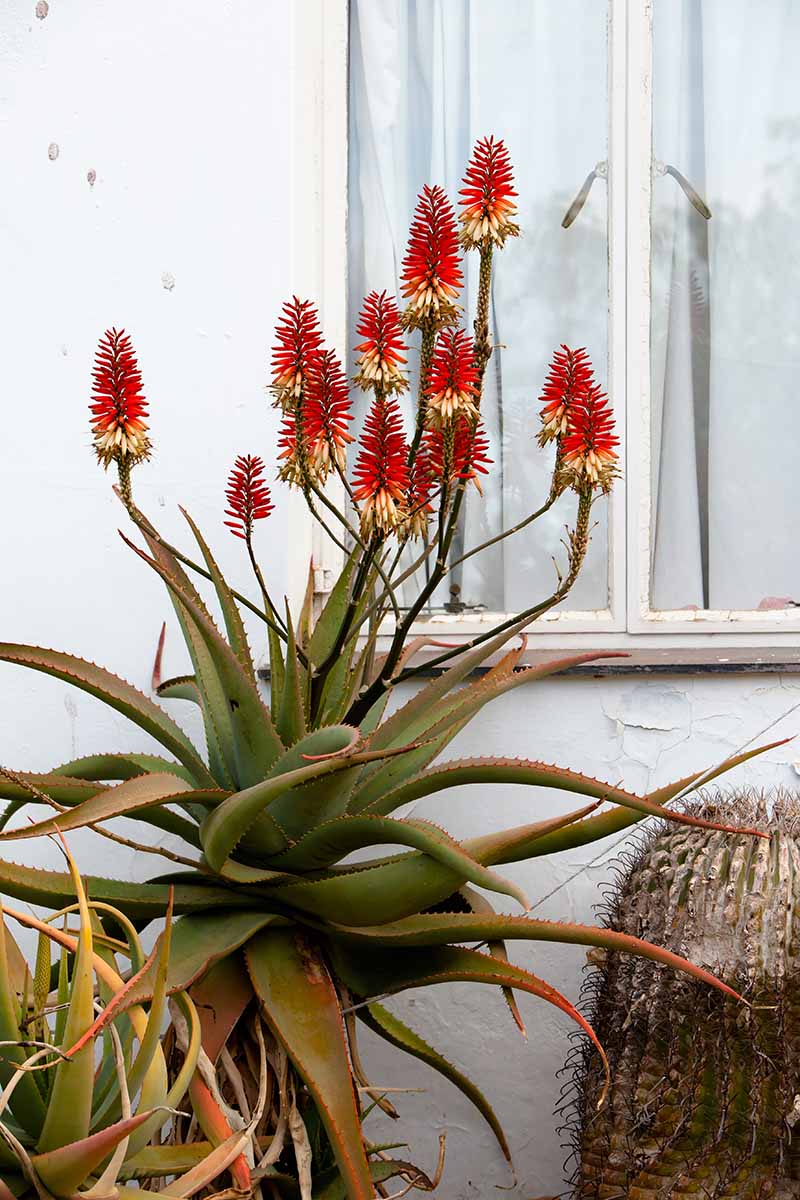
It can take a few years for plants to mature and for blooming to begin, but if you’re in a location where outdoor planting is a possibility, you will want to consider the type of blooms you can expect to grace your landscape.
Most appear in shades of red, orange, or yellow, while some cultivars and hybrids feature flowers in pink, coral, or white tones instead.
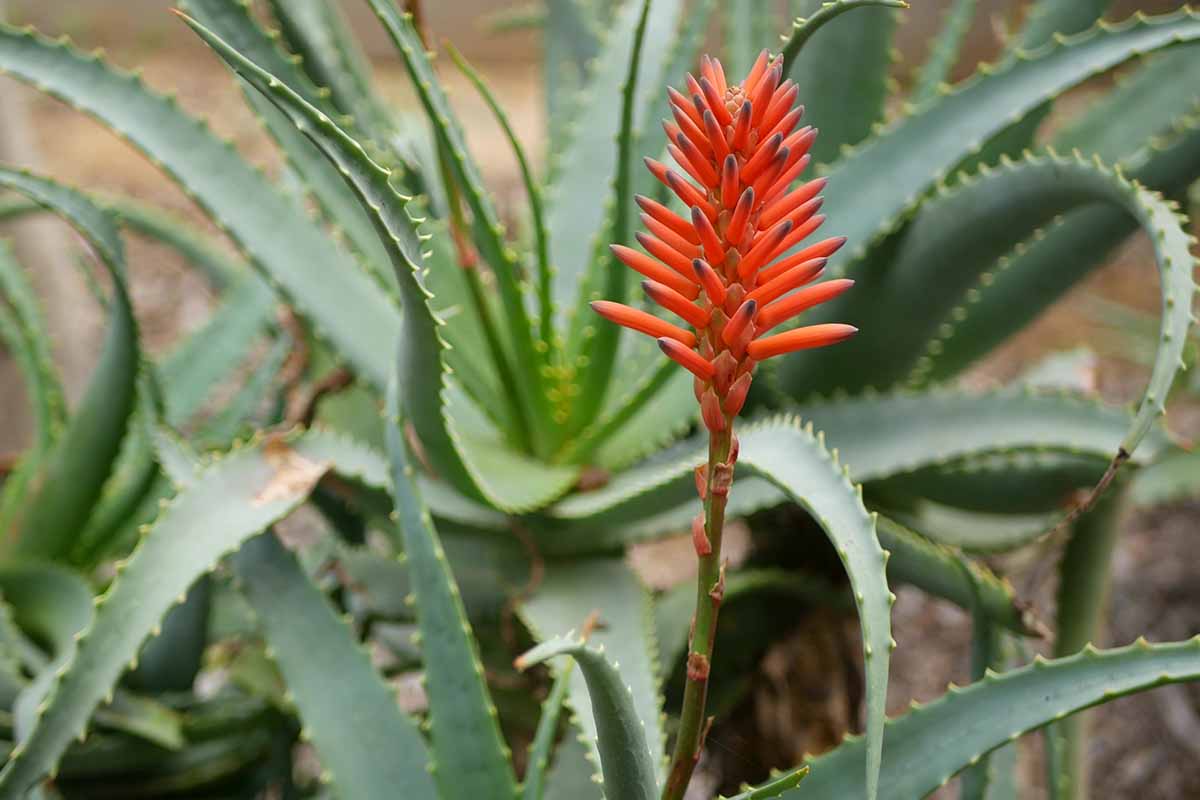
And, unlike the green varieties that are often so easy to find in garden centers, foliage color and shade can vary from one type to the next as well.
Along with the solid or speckled green versions, you can find species and cultivars with red, purple, yellow, or blue tones.
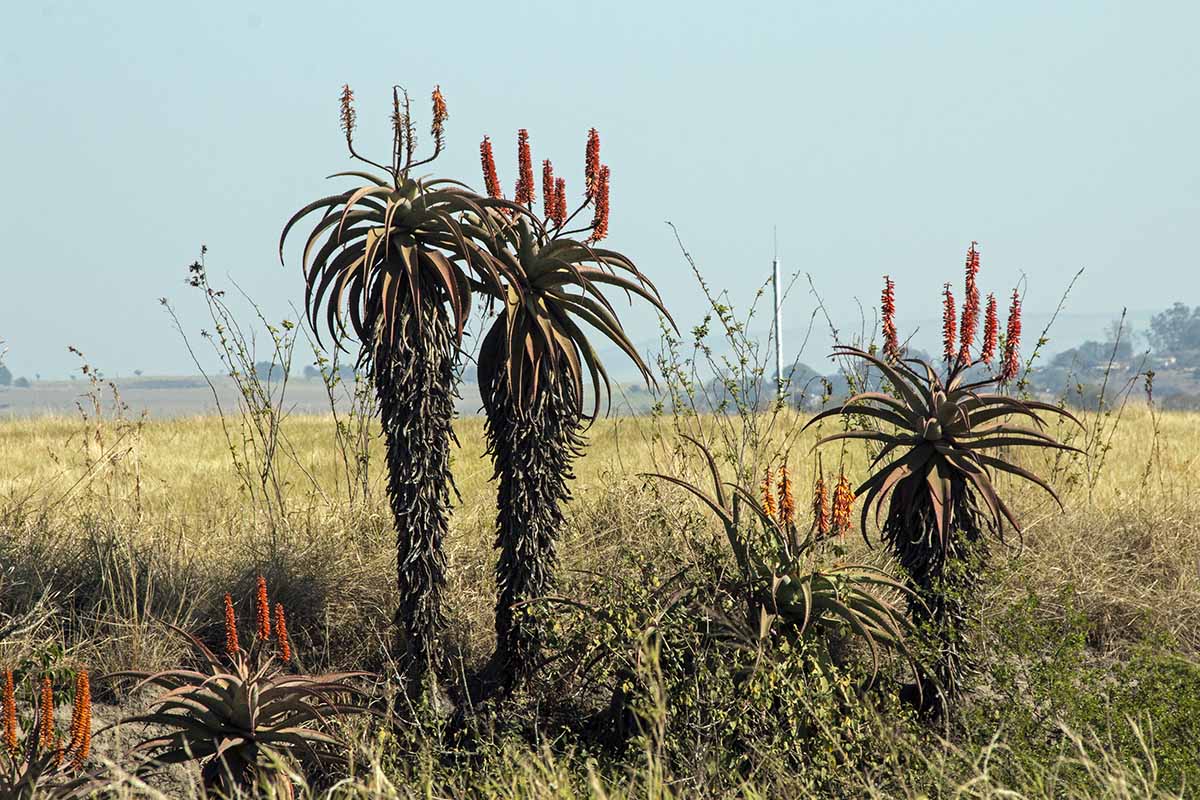
It’s also important to note that some reclassification has occurred among the genus in recent years, resulting in some popular varieties known commonly as aloes being moved into other genera.
We’ll cover some of those changes up ahead.
Let’s break these categories down and take a look at some basic ways to sort them when identifying these plants.
Cold-Hardy Types
Almost all aloes have similar features in that they produce fleshy, succulent leaves with toothed margins.
Many are only suited for outdoor growing in hot, arid climates and a large number of species are endemic to desert regions of the African continent.
Aloe, agave, prickly pear, and many other varieties of widely known succulents and cacti often prefer dry heat.
However, there are quite a few options for planting outdoors in cooler zones, such as those where seasonal low temperatures fall between about 20 and 50°F.
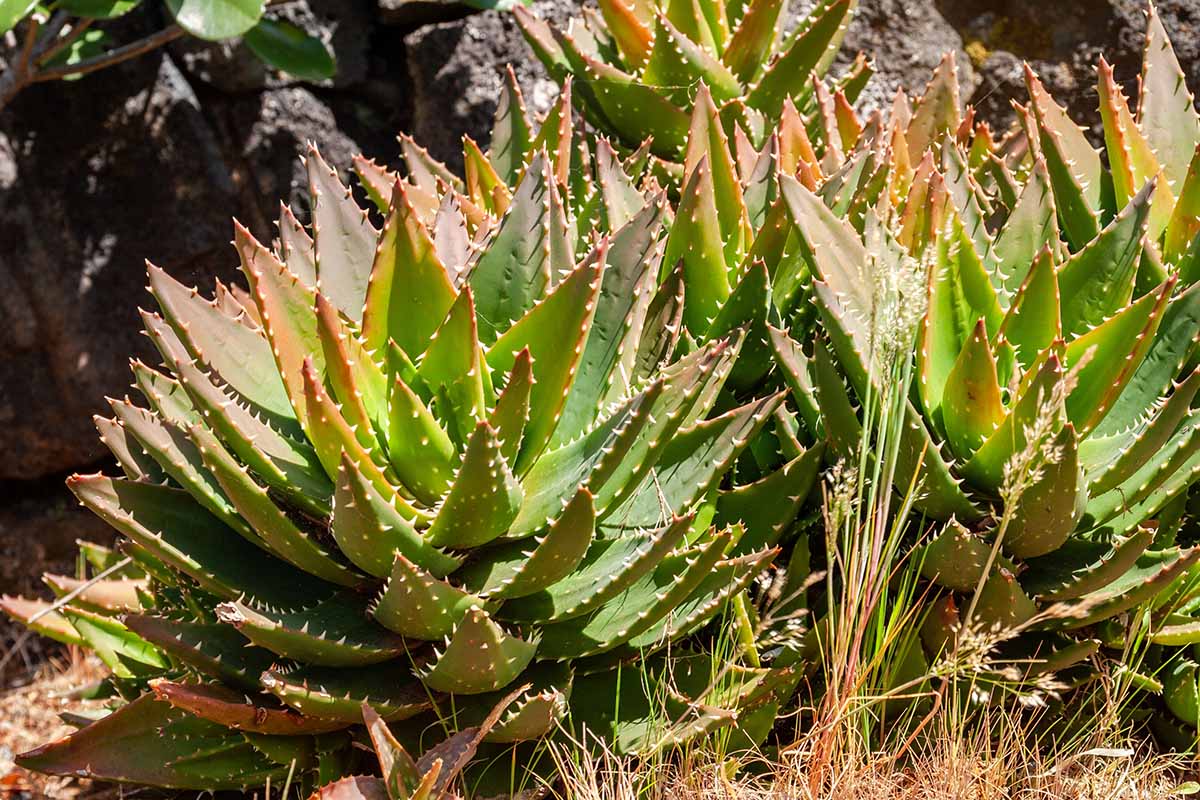
These types are hardy in cooler regions like those of their native environments, such as cool mountain peaks where more ambient moisture is common.
The thicker foliage of the short-leaved aloe, A. brevifolia, for example, is tolerant of chilly temperatures.
Its visually captivating rosette form and compact size make this species a lovely addition to a rock garden or succulent mass planting in regions where winter temperatures remain fairly mild.
Note, however, that this species tends to send out pups in close proximity, creating a dense clump of plants.

A. striata, or the coral aloe, is also considered a cold-hardy type, but it could be included among the compact and colorful types we’ll cover below as well.
This makes it a great choice if you’re looking for a small, container-appropriate size, tolerance for chilly temperatures, little to no marginal teeth, and bright color all rolled into one.
Compact Types
The compact specimens may be a little more familiar to houseplant lovers and amateur home gardeners, but it’s important to note that a compact growth habit doesn’t necessarily mean these varieties will always need a small amount of space.
Even though each individual plant may be small once mature, these tend to spread as they send out runners and pups.
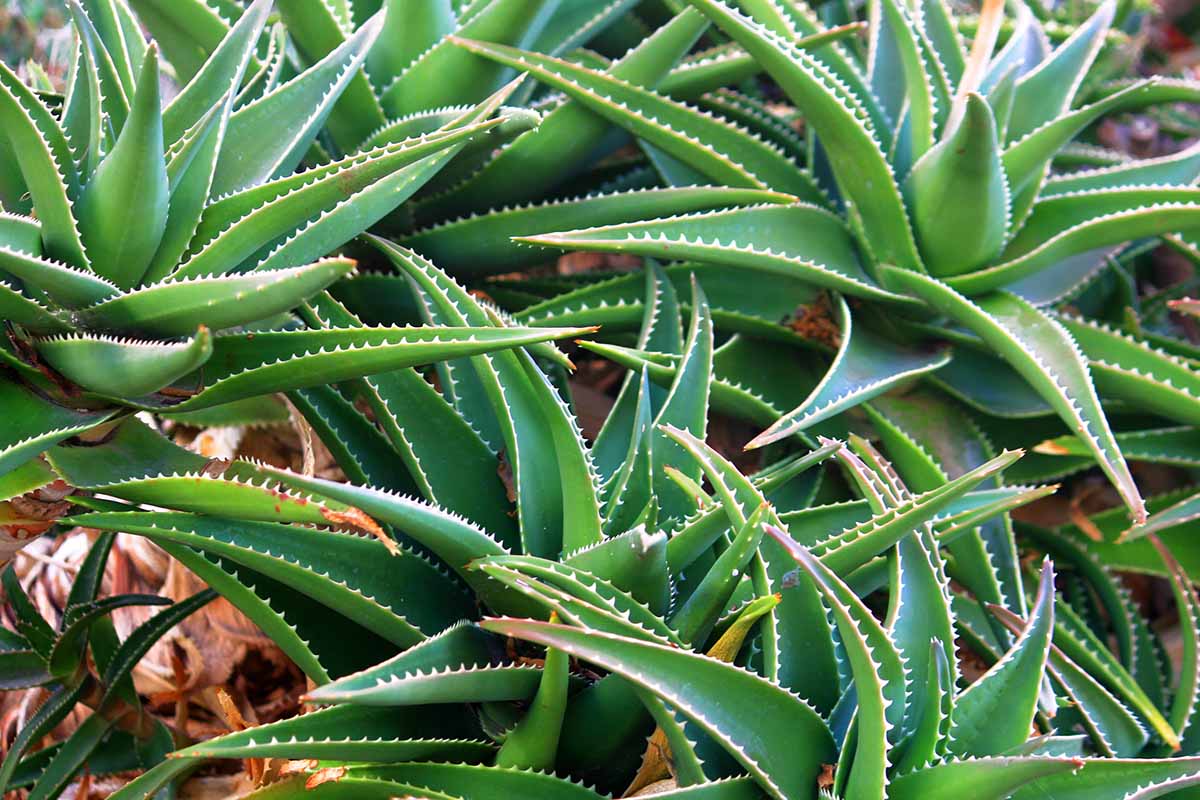
Young specimens can be deceptive and they may quickly prove they need more room than originally anticipated.
One such specimen, A. distans, or the jewel aloe, is so prolific a sprawler that it can be considered a ground cover when planted en masse.
Each plant reaches only about three to six inches tall at full height, but these can fill in space quickly.
Another low-growing type, A. polyphylla, or the spiral aloe, maxes out at a foot tall and two feet in diameter. This type forms a spectacular, tightly clustered, blue-green rosette.
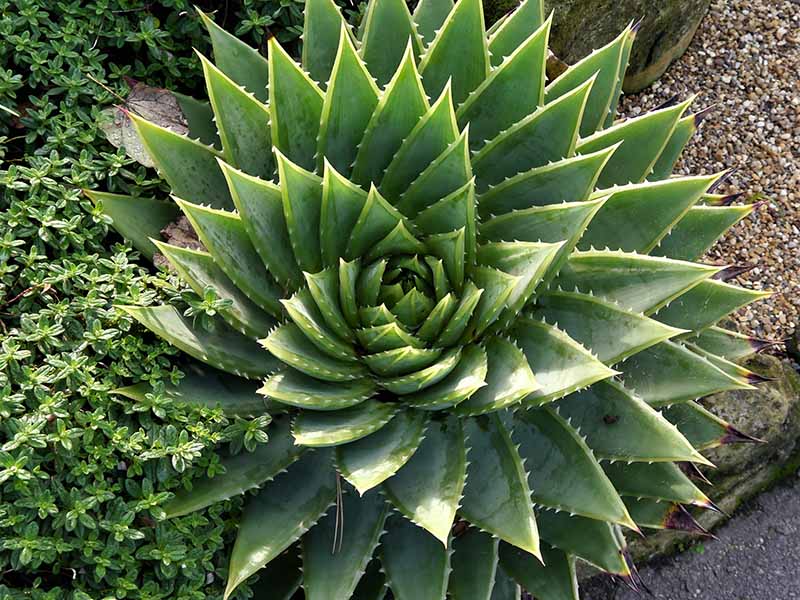
If you’re a fan of striking geometric forms in nature, sometimes referred to as “sacred geometry,” this is one specimen to consider.
‘Minnie Belle,’ bred by Ed Hummel and named after his wife, remains compact in size as well.
This variety, with its chunky, triangular leaves and spiky texture, grows to 15 inches or less at maturity.
Color Variations
While color changes in these succulents can be an indication of stress and poor health, some more unusual colors are simply a part of their everyday coloration.
Tones of purple, red, and blue sometimes appear in normal, healthy specimens while others have been bred specifically to enhance these tones.
Red or purple tones are apparent in several species and cultivars. A. cameronii, or the starfish aloe, displays a bright to deep red tone coupled with a distinctive growth pattern.
Its leaves tend to weep or curl, giving the appearance of a mired starfish on a rocky beach.
The hybrid ‘Crosby’s Prolific’ produces short, upright leaves that have a deep green tone, but when exposed to bright sunlight for an extended period of time, they change to a deep, luscious rose tone.

Sunset (A. dorotheae), rubble or mitre (A. perfoliata), and crawling octopus (A. vanbalenii) aloe can all make striking, unexpected additions to the landscape or to containers placed in a sunny location indoors.
Note, however, that too much shade or low light can result in green leaves instead.
Their bright red and orange coloration draws the eye while their somewhat strange form makes these species true conversation pieces.
As part of a xeriscape, mixed with other colorful specimens or grouped with duller colors, they’ll add easy-care interest.
‘Christmas Carol’ can also take on a red tone throughout its fleshy leaves, complementing its typically red-toothed margins.
This cultivar is a very popular choice for its compact size and lovely speckled leaves – you can learn more about it in our complete guide.
‘Purple Haze’ has been bred for dusky purple coloration, so even though it remains compact at just 12 inches or so at maturity, it’ll catch the eye in a container on a sunny windowsill.
Hybrids ‘Walmsley’s Blue’ and ‘Blue Elf’ have both been bred blue coloring. Both also produce orange blooms that contrast strikingly with their gray-blue foliage.

The yellow, gold, or orange tones exhibited by A. nobilis, the gold-toothed aloe, make a striking addition to the home as a potted plant.
Variegated gold-toothed aloe (A. nobilis var. variegata) has thick leaves and a compact habit, reaching only about one foot in height at maturity.
It displays the same gold to orange tones as its forebear, but with the addition of pale yellow to cream stripes along its leaves.
Rambling or Shrub-Like Types
Remember those larger specimens that I mentioned before? Some have a shrub-like habit, such as A. arborescens, also known as the torch, krantz, or candelabra aloe.
This popular succulent of many nicknames is a structurally striking wonder frequently incorporated into xeriscapes and sandy rock gardens, and beloved for its lovely bright orange blooms.
It’s also cold hardy down to about 20°F, so it can be planted outdoors in regions where winter temperatures don’t plummet very far below freezing.

Torch aloe tends to form a mass of plants, each sending up a clustered raceme at the same time – hence the reference to a candelabra.
One of my personal favorites is Kumara plicatilis, formerly A. plicatilis. Also known as fan aloe, its flat, fan-like leaves are produced atop smooth, gray, branched trunks.
Its leaves are blue-green, layered, and 12 inches in length, curving upright to form the signature, stunning jade fans. These beauties reach about six feet in height at maturity, in ideal conditions.
Perhaps one of the quirkiest and most unique species available is the climbing variety formerly known as A. ciliaris, recently reclassified as Aloiampelos ciliaris.
This odd fellow produces new growth in a vertical pattern on semi-woody stems.
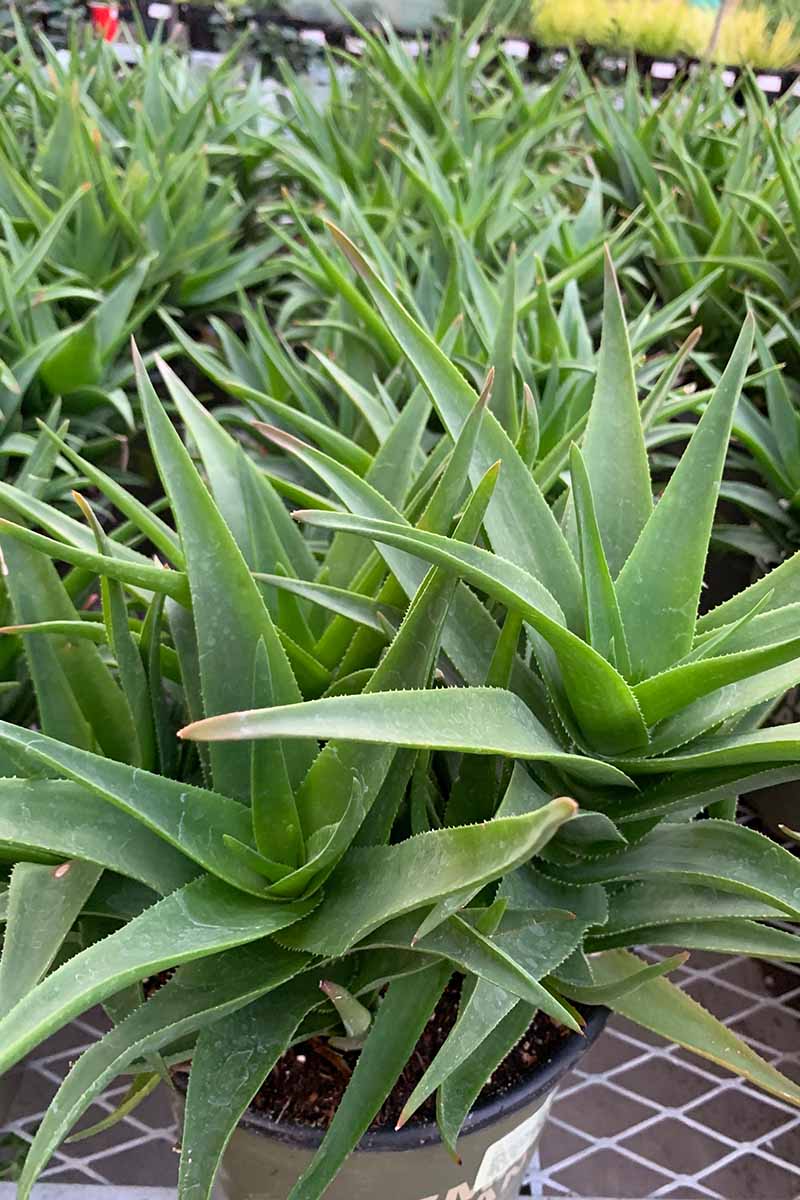
It remains compact as a young specimen, often resembling a spotless version of A. barbadensis, making it suitable for container growing.
But over time as it matures, you might be competing with rambling, explosive growth.
In ideal conditions, this species can achieve more than 10 feet in height indoors or a whopping 30 feet outdoors!
Tree Types
Though lesser known, some species can grow to giant proportions, such as the tree types – yes, tree aloe is a thing.
Species like A. africana, which reaches heights of up to 10 feet, and A. excelsa, aka Zimbabwe aloe, which can tower over the garden at a huge 18 feet at maturity, are difficult to impossible to include in many settings because of their size.
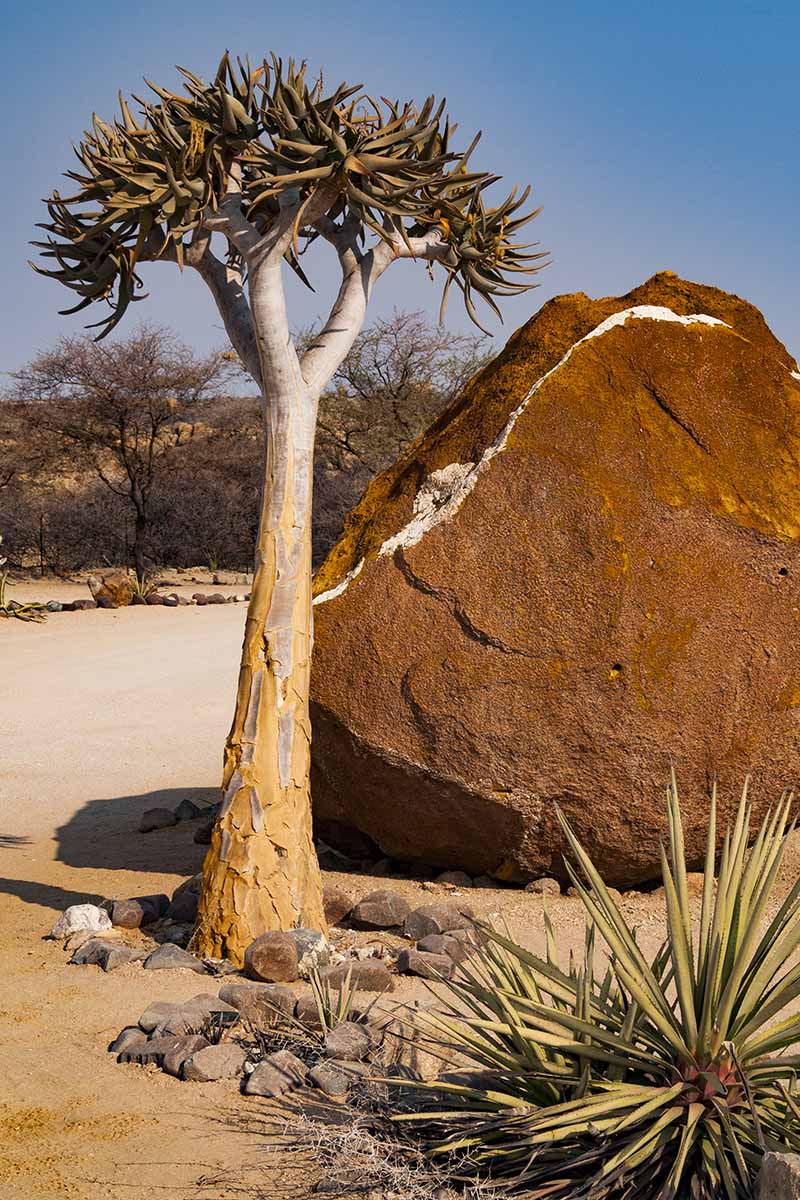
Some tree types can be a bit deceiving when they’re young.
Species such as A. marlothii, or mountain aloe, may appear compact in their juvenile stages, but as they grow, they form a trunk-like stem that lifts the leafy crowns 10 to 15 feet high.
As leaves die, they remain attached to the stem, creating a distinctive skirt.
Tree types hail primarily from southern and eastern Africa but some, like A. castellorum, are endemic to regions within the Arabian peninsula.
As such, a lot of them prefer the arid conditions that you might expect, although there are also species that tolerate cooler temperatures with more moisture.
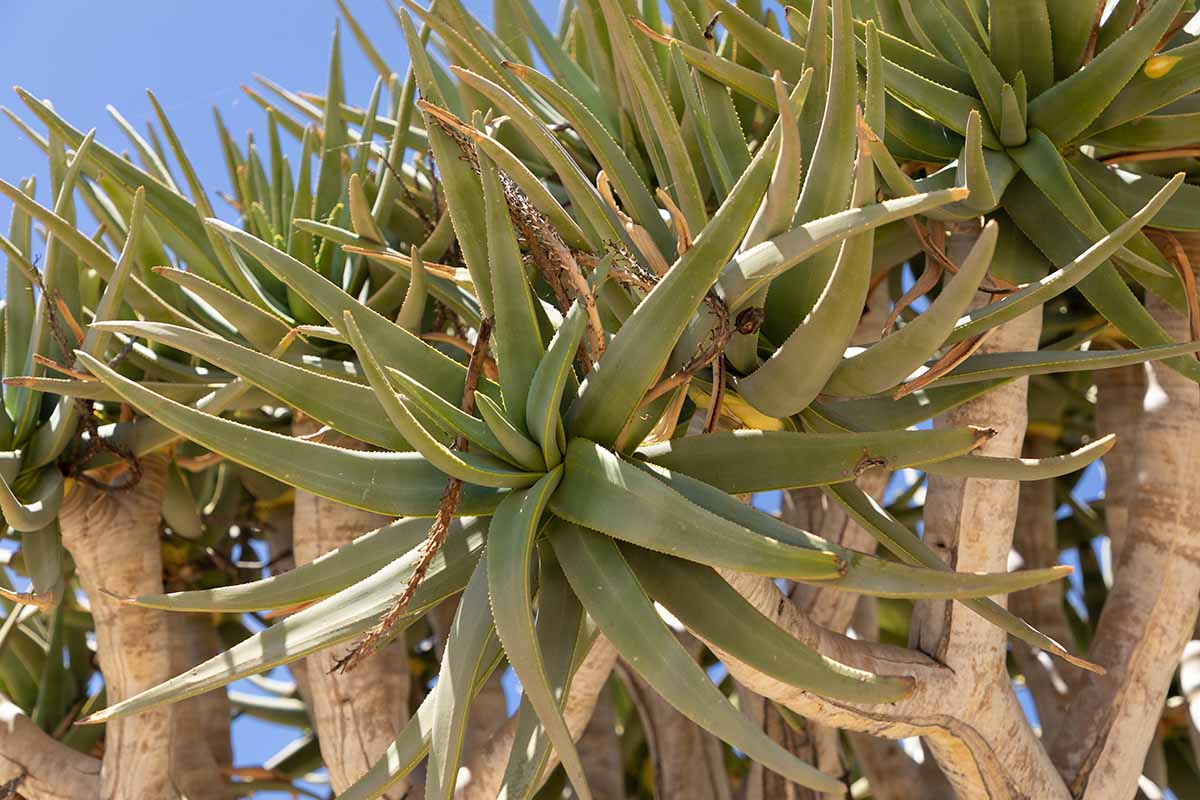
Most tree types form a single central column or trunk which sometimes branches as the specimen matures.
Atop each trunk or branch, spiky leaves burst forth in the typical rosette pattern. The result is something you might expect to see a Dr. Seuss character pop out of unexpectedly.
Gasteria and Haworthia Hybrids
Because of the amazing results that can be achieved by crossing aloes with members of other related succulent genera, such as Gasteria and Haworthia, it’s common to find hybrids on the market with a combination of these as parent species.
Hybrid aloes bred with Gasteria species are often described using the portmanteau Gasteraloe.
Members of the Gasteria genus tend to have thick, short leaves, while Haworthia hybrids display interesting patterns such as speckles and stripes, and have flatter leaves.
Both are well suited to indoor growing as they are tolerant of low light conditions, and tend to remain more compact in size than aloe.
Gasteraloe hybrids exhibit new features such as novel leaf textures, shapes, and sizes, or different colors and patterns than what are normally available in straight species plants from any of these groups.
Some hybrids display pale-colored blooms. Unlike the orange, red, and yellow you generally see among aloe plants, you might expect pink or white instead.
The ‘Twilight Zone’ hybrid is a popular example, a cross of A. haworthioides and G. carinata.
‘Doran Black’ is another hybrid cultivar common in cultivation that displays features that might make it tough to identify its aloe parentage.
Breeders throughout the United States have been crossing plants from these genera for decades, and there are quite a few offerings in cultivation available for purchase.
An Astounding Assortment of Aloe Abounds
Alright, be honest – how badly have I contributed to your plant hoarding habit?
There are so many wonderful, attractive, and unique types to grow at home, especially for those in appropriate Zones with space outdoors!

What type of aloe are you growing? Tell us about it in the comments section below! We’d also love to answer any questions that you may have.
If you’re inspired to learn more about aloes and how to grow them, these titles might spark your interest:
